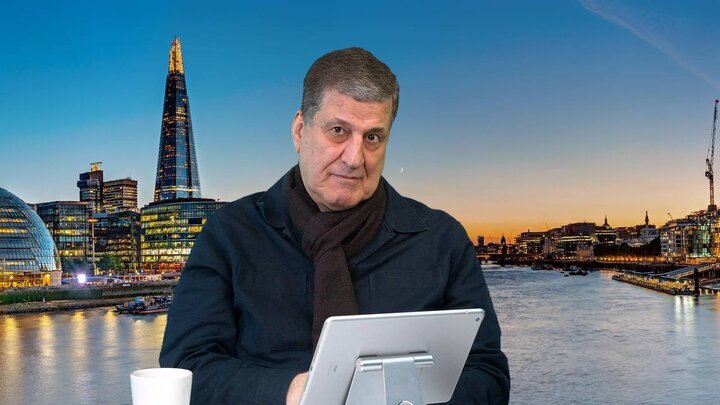Amid the complexity of the international scene, Iran emerges as a party with a cohesive diplomatic vision supported by internal unity and robust diplomatic engagement, working on sectors that hinder the ability of the US administration to develop a unified attitude.
These dynamics make Rome negotiations a critical time not only to address nuclear issues, but also to highlight how Iran’s aggressive diplomacy can serve as a model for navigating global challenges.
Iran enters these negotiations with confidence rooted in wise leadership and internal cohesion. Contrary to the narrative of trying to fragment the system of the Islamic Republic, the decision to participate in consultations was made through institutional consensus, reflecting the consultation mechanism that prioritizes unity of the Islamic system as a strategic obligation.
This unity is evident in the performance of the Iranian negotiating team, who is working in harmony under the guidance of Foreign Minister Abbas Aragut, as a senior representative of the Islamic Republic. This unity is not merely a negotiation tool, but a clear expression of vision aimed at protecting national interests, regardless of the outcome of the dialogue.
In contrast, the US administration suffers from internal divisions that weaken its position. In President Trump’s administration, the clash between two visions: one embraced by Vice President Vance, who advocates a diplomatic approach that prioritizes dialogue, and Secretary of State Marco Rubio, who prefers a hard-line stance that relies on pressure and threats. This internal conflict has plunged American strategy into ambiguity and makes it difficult to predict the extent of Washington’s commitment to a course of negotiation or practical solutions.
But it is not only its internal unity that distinguishes Iran’s position, but also clear and prominent diplomatic activities that transcend nuclear issues. Iran pursues multidimensional diplomacy aimed at strengthening its regional and international presence. Iranian officials are holding intensive meetings with players from major regions such as Turkey and Qatar, as well as counterparts from countries such as Russia and China, to develop economic and political ties.
For example, frequent visits by foreign ministers to Iran’s Asian and European capitals aim to strengthen energy and trade cooperation, strengthening Iran’s ability to counter sanctions. Furthermore, Iran’s active participation in regional organizations such as the Shanghai Cooperation Agency emphasizes that it is not isolated, but dynamic actor in the international system. This diplomatic activity gives Iran strategic flexibility and allows for diversifying political and economic options, thereby reducing the impact of American pressures.
It is clear that Iran is taking a realistic approach to managing expectations in the context of negotiations. Ayatollah Seiyedari Khamenei, a statement by the leader of the Islamic Revolution, eschews excessive optimism and pessimism, underscores the need to treat negotiations as part of everyday diplomatic research. To achieve this, Iran is trying to minimize the media frenzy surrounding consultations by controlling the flow of related news, preventing it from becoming an extraordinary event that controls public opinion, especially within Iran. This approach reflects a perception of the importance of focusing on material in form, particularly in media campaigns aimed at distorting negotiation objectives.
Negotiations themselves are complex processes that require time and patience. Iran recognizes that achieving an immediate breakthrough is unrealistic, especially with ongoing tensions and external pressures. It therefore emphasizes that the United States must abandon its language of threats and sanctions and recognize Iran’s right to peaceful nuclear energy under a non-enhancement treaty. At the same time, Iran is focusing on protecting and maintaining the nuclear cycle as a strategic priority. This does not engage in debate over the level of enrichment, which is often used as a pressure tactic.
As Tehran emphasizes, the essence of negotiations should revolve around two objectives: Washington’s complete lifting of non-gimate sanctions for the benefit of Iranian people, and building confidence in the peaceful nature of Tehran’s nuclear programme. However, these goals face obstacles, including the influence of entities like the Zionist administration trying to hamper progress, along with division within the US administration. Reports such as those published by Axios highlight this challenge and point to tensions between the diplomats led by Vance and the hardliners represented by Rubio and Waltz.
In conclusion, Iranian diplomacy has emerged as a model of challenge-facing activities and flexibility. Iran presents an image of a country that is confident in its capabilities through internal cohesion, extensive external engagement and realistic management of negotiations. In contrast, the US faces internal challenges that could limit its effectiveness. The success of Rome’s negotiations depends on both parties’ ability to overcome pressure and division, respecting Iran’s rights and committing to solutions that contribute to regional stability. In Rome, negotiations will not only be a dialogue between the two countries, but also a test of diplomatic capabilities to build bridges in an increasingly complex world.
MNA

